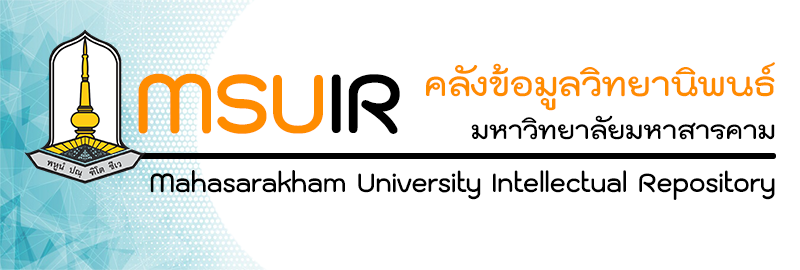Please use this identifier to cite or link to this item:
http://202.28.34.124/dspace/handle123456789/2698| Title: | Mazu Culture at Fujian Coastal City of China: Symbolic Interaction and Meaning Change in the Context of World Cultural Heritage Mazu Culture at Fujian Coastal City of China: Symbolic Interaction and Meaning Change in the Context of World Cultural Heritage |
| Authors: | Pinglan Lin Pinglan Lin Supachai Singyabuth ศุภชัย สิงห์ยะบุศย์ Mahasarakham University Supachai Singyabuth ศุภชัย สิงห์ยะบุศย์ supachai.si@msu.ac.th supachai.si@msu.ac.th |
| Keywords: | Mazu culture Symbolic interactions Meaning changes World Cultural Heritage |
| Issue Date: | 1 |
| Publisher: | Mahasarakham University |
| Abstract: | This research is foundational and employs qualitative methodologies. Set against the backdrop of World Heritage culture, it delves into the "Mazu Culture of Coastal Cities in Fujian, China." The study delineates four research objectives: 1) Investigating symbolic representation-tracing the evolution and underpinnings of Mazu culture in the historical continuum of Fujian coastal cities. 2) Probing symbolic interaction-historical deconstruction and contemporary construction of the meanings within the Mazu culture. 3) Charting symbolic transformation-temporal interpretations and the evolutionary trajectory of Mazu cultural symbols. 4) Symbolic reimagining-new opportunities for Mazu culture in the progression of World Heritage.
Findings suggest that the Mazu culture, emblematic of the coastal cities of China, stands as a unique religious and cultural phenomenon imbued with profound historical significance. Having undergone an extensive historical metamorphosis, Mazu culture encapsulates reverence and gratitude. The veneration of Mazu transcends mere religious belief, encompassing a rich tapestry of symbolic elements such as temple fairs, deity processions, music, and dance, culminating in a multidimensional cultural system. From the Song Dynasty to the present, the vicissitudes in the history of Mazu worship in Fujian coastal cities have paralleled shifts in Mazu's symbolic interactions and meanings. The evolution of Mazu culture in these cities has been multifaceted, with its societal roles adapting to the ebbs and flows of historical epochs. From ensuring maritime safety to symbolizing cultural and societal cohesion, the evolution of Mazu worship in the Fujian region mirrors intricate historical and societal shifts, exemplifying the interplay between societal transitions and individual identity.
Mazu culture, a pivotal element of the coastal Fujian region in China, serves as a cultural nexus and shared value pursuit linking local inhabitants with the global Chinese diaspora—acting as a mutual "social capital." In this contemporary era, as part of the intangible cultural heritage initiative, Mazu culture embraces new prospects. Its revitalized applications showcase a renewed visage. It not only acts as a conduit for religious faith, providing solace to believers and fostering societal harmony, but also emerges as a vital asset in augmenting cultural soft power and fostering international dialogues. Concurrently, it serves as a catalyst propelling industrial investments, cultural and leisure tourism, and maritime economic development. - |
| URI: | http://202.28.34.124/dspace/handle123456789/2698 |
| Appears in Collections: | Faculty of Fine - Applied Arts and Cultural Science |
Files in This Item:
| File | Description | Size | Format | |
|---|---|---|---|---|
| 63012160019.pdf | 5.7 MB | Adobe PDF | View/Open |
Items in DSpace are protected by copyright, with all rights reserved, unless otherwise indicated.

